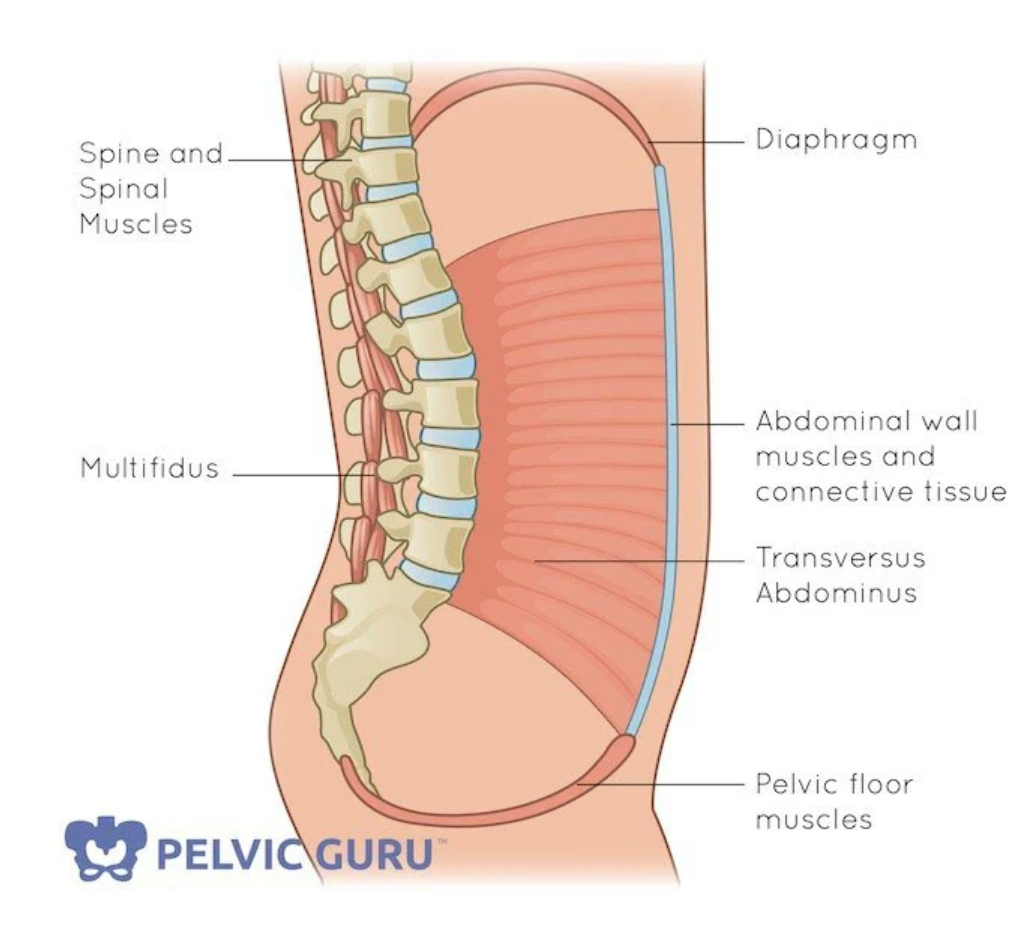Core Strengthening During Pregnancy
Mangiarelli Rehabilitation physical therapist and pregnant mom, Sarah, demonstrates 5 core strengthening exercises you can perform safely during pregnancy. Building a strong core during pregnancy can help you manage the demands of pregnancy on the body and minimize diastasis recti and other pregnancy symptoms. Strengthening your core during pregnancy not only helps support your pelvic organs as your baby grows and alleviates pressure on the back but can also help with the physical demands of labor.
What is Your Core?
Your core muscles are the foundation of movement for your entire body, anchoring your center of gravity, stabilizing the spine and pelvis, and making constant adjustments to maintain balance and make dynamic movements. The core is made up of muscles of the abdomen, trunk, and back: transverse abdominis, rectus abdominis, oblique muscles, back muscles (erector spinae and multifidus), pelvic floor muscles, and the diaphragm.
The transverse abdominis is the deepest of the abdominal muscles and acts as a girdle of the internal organs, while the rectus abdominis helps the torso flex forward, stabilizes and controls the tilt of the pelvis, and plays a key role in breathing, labor, and bladder and bowel function.
The obliques are critical to bend, rotate, stabilize, and move the spine while the erector spinae muscle group and multifidus stabilize the spine and allow it to extend and rotate. The pelvic floor muscles are the base of the core muscles, control pressure within the abdominal cavity, and support the pelvic organs, while the diaphragm aids in healthy breathing.
How Does Pregnancy Affect Your Core?
During pregnancy, your core muscles house your shifting organs, uterus, placenta, and growing baby and undergo quite a bit of stretching to accommodate your baby. Coordination between the core muscles can be disrupted and a breakdown in their functioning can contribute to common pregnancy symptoms like urinary incontinence, low back pain, and feelings of heaviness through the vagina and pelvic floor.
The abdominal muscles in particular separate to a certain degree to accommodate the baby, which can pull and cause the linea alba to thin (linea alba is fibrous tissue that holds the abdomen together and creates the centerline of the six-pack). If this area is overly taxed, it can lead to diastasis recti; diastasis recti involves a separation of the rectus abdominis muscle, causing the connective tissue to stretch and resulting in weakness in the midsection and a visible, palpable gap in the abdominal muscle. Therefore, building a strong core before and during pregnancy can help to manage the demands of pregnancy on the body and minimize diastasis recti and other pregnancy symptoms.
Safe Core Strengthening Exercises During Pregnancy
Strengthening your core when pregnant helps to support your pelvic organs as your baby grows and to alleviate pressure on the back. A strong core can also help with the physical demands of labor. Research confirms that there are few-to-none adverse effects of exercising during a non-complicated pregnancy. However, it is always recommended to consult with your physician before starting an exercise program.
Babies that are born to women who exercise during pregnancy have been shown to be less agitated, more alert, and are better able to handle the stress of labor. Pregnant women also benefit from exercise with easier and shorter labor times and enhanced recovery postpartum.
Mangiarelli Rehabilitation physical therapist and pregnant mom herself, Sarah, demonstrates five core strengthening exercises that meet all American College of Obstetricians and Gynecologists (ACOG) and American College of Sports Medicine (ACSM) guidelines for training during the 1st, 2nd, and 3rd trimesters of pregnancy in the video below.
The five core strengthening exercises are (1) opposite arm/leg raise, (2) can-can, (3) modified V-sit on a bench or the floor, (4) seated side bends with a band, and (5) standing pelvic tilts. Begin by performing 10-12 reps and work up to 3 sets a few times a week.
There are a few precautions to take when performing core strengthening exercises during pregnancy. Avoid lying supine (on your back) after the first trimester as this can decrease cardiac output for mom and baby by putting too much pressure on the vena cava which carries blood to your heart. It is also best to skip full sit-ups, crunches, and double leg lifts as they put pressure on and pull on your abdomen.
Exercising during pregnancy can be beneficial for both you and your baby. Mangiarelli Rehabilitation physical therapist Sarah demonstrates five core strengthening exercises that are safe to do throughout your pregnancy!
